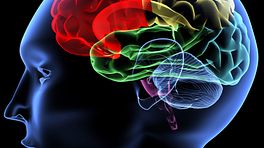Due to the observations that raised questions, a new theory of pain was developed in the early 1960s to account for the clinically recognized importance of the mind and brain in pain perception. It is called the gate control theory of pain, and it was initially developed by Ronald Melzack and Patrick Wall.
Although the theory accounts for phenomena that are primarily mental in nature - that is, pain itself as well as some of the psychological factors influencing it - its scientific beauty is that it provides a physiological basis for the complex phenomenon of pain. It does this by investigating the complex structure of the nervous system, which is comprised of the following two major divisions:
- Central nervous system (the spinal cord and the brain)
- Peripheral nervous system (nerves outside of the brain and spinal cord, including branching nerves in the torso and extremities, as well as nerves in the lumbar spine region)
In the gate control theory, the experience of pain depends on a complex interplay of these two systems as they each process pain signals in their own way. Upon injury, pain messages originate in nerves associated with the damaged tissue and flow along the peripheral nerves to the spinal cord and on up to the brain. So far, this is roughly equivalent to the specificity theory of pain described above.
However, in the gate control theory, before they can reach the brain these pain messages encounter "nerve gates" in the spinal cord that open or close depending upon a number of factors (possibly including instructions coming down from the brain). When the gates are opening, pain messages "get through" more or less easily and pain can be intense. When the gates close, pain messages are prevented from reaching the brain and may not even be experienced.
Although no one yet understands the details of this process or how to control it, the following concepts are presented to help explain why various treatments are effective and how to find solutions to chronic back pain.
The Peripheral Nervous System
Sensory nerves bring information about pain, heat, cold and other sensory phenomena to the spinal cord from various parts of the body. At least two types of nerve fibers are thought to carry the majority of pain messages to the spinal cord:
- A-delta nerve fibers, which carry electrical messages to the spinal cord at approximately 40 mph ("first" or "fast" pain).
- C-fibers, which carry electrical messages at approximately 3 mph to the spinal cord ("slow" or "continuous pain")
A good example of how these respective nerve fibers work is the activation of the A-delta nerve fibers followed by the activation of the slower C-fibers. The activation of other types of nerve fibers can modify or block the sensation of pain.
After hitting one’s elbow or head, rubbing the area seems to provide some relief. This activates other sensory nerve fibers that are even "faster" than A-delta fibers, and these fibers send information about pressure and touch that reach the spinal cord and brain to override some of the pain messages carried by the A-delta and C-fibers.
The action of these other types of nerve fibers helps to explain why treatments such as massage, heat or cold packs, transcutaneous nerve stimulation, or even acupuncture are often effective in treating back pain. The nerve endings in the back are transmitted by special peripheral nerves first to the spinal cord and then up to the brain. These messages can be overridden by other signals in the manner described above.Treatments such as massage, heat, cold, TNS (transcutaneous nerve stimulation), or acupuncture can change a pain message due to some of these differences in nerve fibers.
The same principles apply in back pain. The nerve endings that detect pain are present in many structures in the back including the muscles and ligaments, the disks, the vertebrae, and the facet joints. When one of these parts is irritated, inflamed, or mechanically malfunctioning, the pain message will be transmitted by special peripheral nerves to the spinal cord and up to the brain. These messages can be over-ridden by other signals produced by the treatments listed previously.






